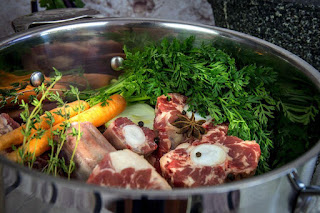Benefits of Grass-Fed Beef for People on the Ketogenic Diet or Paleo Diet
Ketogenic and paleo diets have become far more popular in recent years. This is due to an increased awareness of the various benefits they can bring. For many people, these diets have helped them to lose weight and reduce fatigue. The primary focus of these diets is to maximize fats and proteins whilst minimizing the intake of carbohydrates. Both diets heavily restrict the intake of carbohydrates.
What is the difference between a Ketogenic diet and Paleo diet?
Both diets are reasonably similar, and both diets have been proven effective as short-term weight loss solutions. The two diets both emphasize the consumption of whole foods. The ketogenic diet has a strict macronutrient intake requirement; this is intended to create a ketosis reaction in your body that burns fats. The paleo diet is less strict in this sense and is more of a lifestyle than a diet. It focuses on the lifestyle choices and diets of early hunter-gatherers and believes that these are optimal for modern humans as well. Meat plays a vital role in both of these diets because of its high fat and low carbohydrate content.
Celebrity Chef Pete Evans is one of the largest backers of these diets. He sees them as essential for living healthier and reducing the incidence of chronic diseases. He has written a lot about the various benefits of a cyclical ketogenic diet.
What is grass-fed beef?
Beef is usually considered grass-fed if the cow’s diet was limited to grass and other naturally-grown foraged vegetation through its lifetime. It would not consume any grains and would have continuous access to green pastures. This is especially relevant to the paleo diet as animals from that time period would have been roaming and primarily been consuming a grass-fed diet. These strict requirements are why grass-fed beef is higher priced than the regular kind. The ‘regular’ type of beef is grain-fed. These cows are also usually kept in very crowded conditions and do not have regular access to pastures. The use of antibiotics is also widespread. There are no official guidelines on grass-fed beef which is why it is crucial to look for a label that states: “100% grass-fed” or “grass fed, grass finished”. That way you can be confident that the animal has never eaten grain!
Is grass-fed the same as organic?
‘Organic’ has strict definitions provided by the Australian Certified Organic Standard. They state that animals must be given access to the outdoors, as well as be free from antibiotic use. However, they do not stipulate for the prevention of grain feeding. Therefore organic beef is not the same as 100% grass-fed beef as the cows can be fed organic grain! You can purchase organic beef that has also been grass-fed but this is not a condition of being organic.
Benefits
There is a range of benefits to eating 100% grass-fed beef rather than the grain-fed alternative. Many of these are especially relevant for those on ketogenic or paleo diets.
Grass-fed beef is leaner than regular beef
As mentioned above, caloric control is a crucial aspect of both the ketogenic and paleo diets. Grass-fed beef is significantly leaner and has more healthy fats, vitamins and minerals than its grain-fed counterpart. These differences in calories can add up pretty fast, especially over an extended period such as a few months. Therefore grass-fed beef is an excellent option for those pursuing these diets.
High ratio of omega-3 fatty acids
Both diets incorporate a high proportion of ‘good’ fatty acids. Omega-3 is an essential fatty acid that can aid in preventing depression and certain types of cancer. It has been shown to lower blood pressure. New research has also shown that omega-3 fatty acids may improve focus. This is important since some users adjusting to these diets have complained about brain fog. Grass-fed beef can have up to 3 times the amount of these fatty acids than the grain-fed variety.
Vitamins
One concern around ketogenic and paleo diets is that it can be difficult to gain all the required vitamins. A key benefit of grass-fed beef is that it is rich in Vitamin A and Vitamin E. These help keep the immune system strong as well as maintain the health of our skin and eyes. The concentration of Vitamin E can be up to 4 times higher in grass-fed beef than the grain-fed alternative.
High(er) levels of ‘good’ fats
It is not only omega-3 which is seen at higher levels. Another type of fat known as “Conjugated Linoleic Acid” is also present in grass-fed beef. The quantities of this fat can be up to 5 times more than found in grain-fed beef. CLA has been known to prevent weight gain and has also been shown at improving insulin sensitivity. New research is indicating that it may even be helpful in fighting off certain cancers.
Environmental impact
This is not a direct benefit; however, it should be a crucial consideration for anyone who is on the paleo lifestyle. The environmental impact of grass-fed cows is far lower than the usual grain-fed variety. “Grass-fed cows improve soil fertility in the long term, have less of an impact on our water quality and do not increase soil erosion.” (PaleoGrubs) The paleo diet recognises the need to reduce the harmful effects that humans are having on the environment. Grass-fed beef is far kinder to the environment in the long term.

Conclusion
You should now understand the key benefits that grass-fed beef has over the regular grain-fed variety. These benefits are viable to everyone but they become particularly pertinent for those on the challenging ketogenic/paleo diets. Grass-fed beef is an excellent food source for people who are on those diets.


.jpg)

Comments
Post a Comment